 In the last ten years the field of health and wellness coaching has continued to evolve as a professional filed with standards, credentials (https://nbhwc.org) and a solid evidential base (https://journals.sagepub.com/doi/full/10.1177/1559827619850489). We’ve attained more clarity about what effective health and wellness coaching looks like and more awareness of what all coaches need to learn. Coaches have an ethical obligation to constantly be learning and growing in our profession.
In the last ten years the field of health and wellness coaching has continued to evolve as a professional filed with standards, credentials (https://nbhwc.org) and a solid evidential base (https://journals.sagepub.com/doi/full/10.1177/1559827619850489). We’ve attained more clarity about what effective health and wellness coaching looks like and more awareness of what all coaches need to learn. Coaches have an ethical obligation to constantly be learning and growing in our profession.
So, what are the “must reads” for the wellness or health coach? Ten years ago, I posted a three-part blog on this topic.
15 Vital Books For The Wellness Coach: Straight Off My Shelf – Part One
https://wp.me/pUi2y-1n. 15 Vital Books For The Wellness Coach: Straight Off My Shelf – Part Two https://wp.me/pUi2y-1z. 15 Vital Books For The Wellness Coach: Straight Off My Shelf – Part Three https://wp.me/pUi2y-1H.
Now, in 2020, what I want to share with you are the top fifteen books that will influence the way you do coaching, the way you prepare for professional exams, and books that you will want to have at arm’s reach. These are the books on my own bookshelf that I find myself recommending over and over again to the thousands of wellness coaches that Real Balance has trained. There are many great resources out there, but here is my own very biased (as you’ll see when I recommend my own books) and opinionated list. In contrast to my own previous blogs this time I’m listing them in rank-order of importance to the coach practicing in the field.
15 Vital Books for the Wellness Coach – 2020 – Straight Off My Shelf
1. Wellness Coaching For Lasting Lifestyle Change,2nd Ed. , Arloski
2. Masterful Health & Wellness Coaching: Deepening Your Craft, Arloski (In Press)
3. Co-Active Coaching, 4th Ed., Whitworth, Kimsey-House & Sandahl
4. Changing to Thrive, Janice & James Prochaska
5. Becoming a Professional Life Coach, Williams & Menendez
6. Motivational Interviewing 3rd Edition, Miller & Rollnick
7. The Coaching Psychology Manual, Moore, Tschannen-Moran and Jackson
8. The Blue Zones, Dan Buettner
9. Your Journey To A Healthier Life: Paths of Wellness Guided Journal, Vol. 1, Arloski
10. Taming Your Gremlin, Rick Carson
11. The Wellness Workbook, Jack Travis & Regina Ryan
12. The Open Heart Companion, Maggie Lichtenberg
13. The Craving Mind, Judson Brewer
14. Raw Coping Power, Joel Bennet
15. The Way We’re Working Isn’t Working, Tony Schwartz
 1. Wellness Coaching For Lasting Lifestyle Change,2nd Ed. (2014), Michael Arloski. (https://wholeperson.com/store/wellness-coaching-for-lasting-lifestyle-change.shtml) Like I said, a very biased list. Yet, I will have to say that this book (which is now also available in Mandarin) is used by many colleges and universities, as well as other commercial wellness coach training organizations all around the world. The 2014 2nd edition has expanded its coverage of coaching skills and the process of co-creating a wellness plan. The Wellness Mapping 360 Methodology provides the coach with a complete approach to behavioral change that distinguishes this book from others. The integration of what we know from the field of wellness and health promotion is another unique feature of this resource.
1. Wellness Coaching For Lasting Lifestyle Change,2nd Ed. (2014), Michael Arloski. (https://wholeperson.com/store/wellness-coaching-for-lasting-lifestyle-change.shtml) Like I said, a very biased list. Yet, I will have to say that this book (which is now also available in Mandarin) is used by many colleges and universities, as well as other commercial wellness coach training organizations all around the world. The 2014 2nd edition has expanded its coverage of coaching skills and the process of co-creating a wellness plan. The Wellness Mapping 360 Methodology provides the coach with a complete approach to behavioral change that distinguishes this book from others. The integration of what we know from the field of wellness and health promotion is another unique feature of this resource.
2. Masterful Health & Wellness Coaching: Deepening Your Craft, (2020)(In Press) Michael Arloski. (https://wholeperson.com/store/masterful-health-and-wellness-coaching.html) Coaching is both an art and an applied science. In this book my intention is to provide guidance for the health & wellness coaches who wants to go beyond competence to proficiency and embark on a journey towards mastery. The book is divided into four sections, Transformation, How To Be, What To Do, and Coaching People with Health Challenges. We will explore what distinguishes masterful coaches form those who are just learning their craft. Thoroughly substantiated by the evidential literature and providing in-depth lessons on all the major behavioral change theories, Masterful Health & Wellness Coaching will allow the reader to take their coaching to an advanced level. 3. Co-Active Coaching, 4th Ed., (2018) Laura Whitworth, Karen Kimsey-House, Henry Kinsey-House & Phil Sandahl. (https://www.amazon.com/Co-Active-Coaching-Fourth-transformative-conversations/dp/1473674980/ref=sr_1_1?crid=2E78YGNE10TNG&dchild=1&keywords=co-active+coaching+4th+edition&qid=1601155442&sprefix=Co-%2Caps%2C206&sr=8-1)
3. Co-Active Coaching, 4th Ed., (2018) Laura Whitworth, Karen Kimsey-House, Henry Kinsey-House & Phil Sandahl. (https://www.amazon.com/Co-Active-Coaching-Fourth-transformative-conversations/dp/1473674980/ref=sr_1_1?crid=2E78YGNE10TNG&dchild=1&keywords=co-active+coaching+4th+edition&qid=1601155442&sprefix=Co-%2Caps%2C206&sr=8-1)
THE foundational book of the life coaching field. The authors became the founders of The Coaches Training Institute (CTI) and in this work set down the cornerstones that shape the coaching mindset. A great book to bone up on your coaching skills and to learn what the essence of coaching really is. A true must-read.
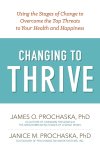 4. Changing to Thrive: Using the Stages of Change to Overcome the Top Threats to Your Health and Happiness (2016), Janice & James Prochaska. (https://www.amazon.com/Changing-Thrive-Overcome-Threats-Happiness/dp/1616496290/ref=sr_1_1?crid=24WCWLPXR1KL2&dchild=1&keywords=changing+to+thrive&qid=1601155877&sprefix=Changing+to+thrive%2Caps%2C202&sr=8-1) Replacing the original Changing For Good (1994), this book definitely is in the top four for your bookshelf. The tremendous utility of the Transtheoretical Model for Behavioral Change (TTM, Stage of Change) makes it the coach’s most important behavior change model to know well.
4. Changing to Thrive: Using the Stages of Change to Overcome the Top Threats to Your Health and Happiness (2016), Janice & James Prochaska. (https://www.amazon.com/Changing-Thrive-Overcome-Threats-Happiness/dp/1616496290/ref=sr_1_1?crid=24WCWLPXR1KL2&dchild=1&keywords=changing+to+thrive&qid=1601155877&sprefix=Changing+to+thrive%2Caps%2C202&sr=8-1) Replacing the original Changing For Good (1994), this book definitely is in the top four for your bookshelf. The tremendous utility of the Transtheoretical Model for Behavioral Change (TTM, Stage of Change) makes it the coach’s most important behavior change model to know well.  5. Becoming a Professional Life Coach: Lessons from the Institute of Life Coach Training, (2015) Patrick Williams & Diane Menendez. (https://www.amazon.com/Becoming-Professional-Life-Coach-Institute/dp/0393708365/ref=sr_1_1?dchild=1&keywords=5.+Becoming+a+Professional+Life+Coach%2C+Williams+%26+Menendez&qid=1601156765&sr=8-1) Pat Williams is one of the true pioneers of Life Coaching and his earlier book (along with Deb Davis) Therapist as Life Coach was one of my favorites as I made the shift from psychotherapist to coach. Becoming A Professional Life Coach largely supplants this earlier book and provides the wellness coach with not only great skill building but lots of very practical guidance for practicing their coaching.
5. Becoming a Professional Life Coach: Lessons from the Institute of Life Coach Training, (2015) Patrick Williams & Diane Menendez. (https://www.amazon.com/Becoming-Professional-Life-Coach-Institute/dp/0393708365/ref=sr_1_1?dchild=1&keywords=5.+Becoming+a+Professional+Life+Coach%2C+Williams+%26+Menendez&qid=1601156765&sr=8-1) Pat Williams is one of the true pioneers of Life Coaching and his earlier book (along with Deb Davis) Therapist as Life Coach was one of my favorites as I made the shift from psychotherapist to coach. Becoming A Professional Life Coach largely supplants this earlier book and provides the wellness coach with not only great skill building but lots of very practical guidance for practicing their coaching.
6. Motivational Interviewing 3rd Ed., (2012) William Miller & Stephen Rollnick. (https://www.amazon.com/Motivational-Interviewing-Helping-People-Applications/dp/1609182278/ref=sr_1_1?dchild=1&keywords=6.+Motivational+Interviewing+3rd+Edition%2C+Miller+%26+Rollnick&qid=1601157105&sr=8-1) This third edition is definitely the best resource on this vital approach to helping people change behavior. Motivational interviewing (MI) is a key tool for the health & wellness coach, especially when working with the ambivalent client. In addition to presenting the MI approach to many of the same skills used in coaching (with their own unique MI terminology), the book contains real gems of learning about the functions many of these skills serve and how to apply them in your coaching.
7. The Coaching Psychology Manual, 2nd Ed., (2015) Margaret Moore, Bob Tschannen-Moran and Erika Jackson. (https://www.amazon.com/Coaching-Psychology-Manual-Margaret-Moore/dp/1451195265/ref=sr_1_12?dchild=1&keywords=The+Coaching+Psychology+Manual%2C+Moore%2C+Tschannen-Moran+and+Jackson&qid=1601157580&sr=8-12) Another foundational book of the wellness coaching field. A comprehensive guide to many of the behavior change theories that coaches use and how to apply them. 8. The Blue Zones: 9 Lessons for Living Longer From the People Who’ve Lived the Longest, 2nd Ed. (2012) Dan Buettner. (https://www.amazon.com/Blue-Zones-Second-Lessons-Longest/dp/1426209487/ref=sr_1_2?crid=1OT3CA9BCUW6O&dchild=1&keywords=the+blue+zones&qid=1601323354&sprefix=The+blue+zones%2Caps%2C202&sr=8-2) Longevity, we’ve found out is only 20% genetics (at the most) and is really 80% lifestyle (culture, behavior, beliefs, environment). Looking at studies of the hot spots or “Blue Zones” around the world where people live to a ripe old age quite often, common denominators teach us what it takes for an environment to make it easier to be well. The lessons for wellness are profound and based in solid evidence. We have made this part of the Real Balance curriculum since it was first published in 2008.
8. The Blue Zones: 9 Lessons for Living Longer From the People Who’ve Lived the Longest, 2nd Ed. (2012) Dan Buettner. (https://www.amazon.com/Blue-Zones-Second-Lessons-Longest/dp/1426209487/ref=sr_1_2?crid=1OT3CA9BCUW6O&dchild=1&keywords=the+blue+zones&qid=1601323354&sprefix=The+blue+zones%2Caps%2C202&sr=8-2) Longevity, we’ve found out is only 20% genetics (at the most) and is really 80% lifestyle (culture, behavior, beliefs, environment). Looking at studies of the hot spots or “Blue Zones” around the world where people live to a ripe old age quite often, common denominators teach us what it takes for an environment to make it easier to be well. The lessons for wellness are profound and based in solid evidence. We have made this part of the Real Balance curriculum since it was first published in 2008. 9. Your Journey To A Healthier Life: Paths of Wellness Guided Journal, Vol. 1, 2nd Ed., (2017) Michael Arloski. (https://wholeperson.com/store/your-journey-to-a-healthier-life.shtml)
9. Your Journey To A Healthier Life: Paths of Wellness Guided Journal, Vol. 1, 2nd Ed., (2017) Michael Arloski. (https://wholeperson.com/store/your-journey-to-a-healthier-life.shtml)
A wellness journal for the client, this book outlines an entire wellness coaching process from self-assessment, to visioning, wellness planning, meeting challenges to change, tracking behavior and setting up accountability and support through connectedness for success. Many of the coaches I’ve trained use this with each of their clients either individually, or as a group guide (works very well in a 12-session format). Many coaches love it simply as their own guide for how they coach their clients.
10. Taming Your Gremlin: A Surprisingly Simple Method for Getting Out of Your Own Way (updated edition) (2003), Rick Carson. (https://www.amazon.com/Taming-Your-Gremlin-Surprisingly-Getting/dp/0060520221/ref=sr_1_1?dchild=1&keywords=Taming+Your+Gremlin%2C+Rick+Carson&qid=1601159057&sr=8-1) Whenever the wellness coaching client takes on change their own personal “Gremlin” or “inner-critic” will be there to oppose it, even if it’s the best thing in the world for that person. Our clients have plenty of external challenges to their attempts at change, but the internal ones can be the most devastating. This classic little book shows us how to spot the self-talk of the gremlin early and get it out of the way (as we get out of our own way!). Another true must read. I know of coaches who supply their clients with copies of this book when folks sign on to coaching.
11. The Wellness Workbook, 3rd ed: How to Achieve Enduring Health and Vitality, (2004) John W. Travis and Regina Sara Ryan . (https://www.amazon.com/Wellness-Workbook-3rd-Enduring-Vitality/dp/1587612135) Health & Wellness coaches need a thorough understanding of wellness and health promotion. This is the foundational book to understand what wellness is truly about. Jack Travis is one of the modern-day founders of the wellness movement and he lays out his theoretical foundation and theories in the introductory thirty-six pages which is worth the price of the book alone.
12. The Open Heart Companion: : Preparation and Guidance for Open-Heart Surgery Recovery, (2006) Maggie Lichtenberg. (https://www.amazon.com/Open-Heart-Companion-Preparation-Open-Heart/dp/0977606309) The psychological side of a major health challenge is often ignored. Maggie Lichtenberg, a PCC level coach, went through mitral valve repair surgery, saw a big missing piece and filled it admirably with this excellent book. As a wellness coach, whether you deal with heart patients or not, this book is an ultimate guide to helping your client with self-efficacy and self-advocacy. I make sure anyone I know (client or not) who is headed into any kind of major surgery (but especially heart surgery) either has a copy of this book or knows about it.
13. The Craving Mind: From Cigarettes to Smart-Phones to Love – Why We Get Hooked & How We Can Break Bad Habits,(2017) Judson Brewer. (https://www.amazon.com/Craving-Mind-Cigarettes-Smartphones-Hooked/dp/0300234368/ref=sr_1_1?dchild=1&keywords=The+Craving+Mind%3A+From+Cigarettes+to+Smart-Phones+to+Love+–+Why+We+Get+Hooked+%26+How+We+Can+Break+Bad+Habits%2C+Judson+Brewer&qid=1601319691&sr=8-1) The subtitle says it all. Health and wellness coaches today are quite likely to discover that their clients may be struggling with “device addiction” as well as other habits that work against their health. Understanding how our mind craves these behaviors and how they feed a cycle of addiction is critical to helping anyone take back control of their lives. What makes Judson Brewer’s approach different is that it is based in the practice of Mindfulness and offers an effective way back to wellness. 14. Raw Coping Power: From Stress to Thriving, (2014) Joel Bennett. (https://www.amazon.com/Raw-Coping-Power-Stress-Thriving/dp/0991510208/ref=sr_1_1?dchild=1&keywords=Raw+Coping+Power%2C+Joel+Bennett&qid=1601319602&sr=8-1) Coaching around stress is an inevitable part of health & wellness coaching, so having the knowledge you need to do so is critical. From knowledge to research about stress to the tools and methods you need to apply it, Raw Coping Power’s strengths-based, resilience building approach is the best resource out there.
14. Raw Coping Power: From Stress to Thriving, (2014) Joel Bennett. (https://www.amazon.com/Raw-Coping-Power-Stress-Thriving/dp/0991510208/ref=sr_1_1?dchild=1&keywords=Raw+Coping+Power%2C+Joel+Bennett&qid=1601319602&sr=8-1) Coaching around stress is an inevitable part of health & wellness coaching, so having the knowledge you need to do so is critical. From knowledge to research about stress to the tools and methods you need to apply it, Raw Coping Power’s strengths-based, resilience building approach is the best resource out there.
15. The Way We’re Working Isn’t Working, (2010) Tony Schwartz. (https://www.amazon.com/Way-Were-Working-Isnt-Performance/dp/1451610262/ref=sr_1_1?dchild=1&keywords=The+Way+We’re+Working+Isn’t+Working%2C+Tony+Schwartz&qid=1601320068&sr=8-1) Our coaching clients are often over-worked and under-supported with ever-increasing demands heaped upon them. Schwartz’s book looks at the systemic problems of the modern-day workplace, but then takes on an approach that individuals can use to cope and hopefully thrive. Think of stress management and time management as energy management. We are wired to deal with stress, but do we have “sufficient volume and intensity” of recovery? A great resource for helping our clients learn how to recover from the stress in their lives.
So, there you have it! Happy reading and keep on learning!
Dr. Michael
Michael Arloski, Ph.D., PCC, NBC-HWC is CEO and Founder of Real Balance Global Wellness (https://realbalance.com) a premier health & wellness coach training organization that has trained thousands of coaches around the world.
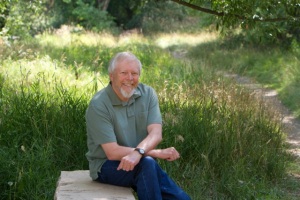



 Seeking Connection
Seeking Connection RESOURCES for helping others and helping ourselves during this crisis:
RESOURCES for helping others and helping ourselves during this crisis:
 Observing by Scanning
Observing by Scanning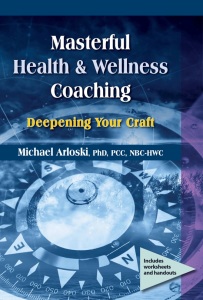 This blog was taken from a chapter in Dr. Arloski’s forthcoming book Masterful Health & Wellness Coaching: Deepening Your Craft, being published soon by Whole Person Associates.
This blog was taken from a chapter in Dr. Arloski’s forthcoming book Masterful Health & Wellness Coaching: Deepening Your Craft, being published soon by Whole Person Associates.  After years of building a foundation, health and wellness coaching has flourished in the last decade. At the beginning of this last decade the International Coach Federation was only fifteen years old and the National Board for Health and Wellness Coaching hadn’t even been thought of yet. My book,
After years of building a foundation, health and wellness coaching has flourished in the last decade. At the beginning of this last decade the International Coach Federation was only fifteen years old and the National Board for Health and Wellness Coaching hadn’t even been thought of yet. My book,  In the last ten years we have seen the profession of health and wellness coaching grow both in its application and as a true profession with standards and credentialing. Early in 2010 the National Consortium for Credentialing Health & Wellness Coaches was formed to develop and establish those standards and a system of credentialing. After an untold number of hours of work by dedicated coaching professionals this evolved into the
In the last ten years we have seen the profession of health and wellness coaching grow both in its application and as a true profession with standards and credentialing. Early in 2010 the National Consortium for Credentialing Health & Wellness Coaches was formed to develop and establish those standards and a system of credentialing. After an untold number of hours of work by dedicated coaching professionals this evolved into the 

 The third area of growth for health and wellness coaching that has ballooned especially in the last few years of our past decade is primary care/lifestyle medicine. The recognition that a large component of our health is behavioral has led to the greater openness to the role of health and wellness coaching in direct medical services. Health and wellness coaches are helping patients to be more successful at medical compliance/adherence, and at accomplishing the directives of the lifestyle prescription recommended by their treatment team. The tremendous growth and increasing acceptance of the principles of lifestyle medicine has helped health and wellness coaches to be seen as a very practical solution for the behavioral changes sought by physicians and other healthcare practitioners. The recent granting of a Level Three CPT Code for health and wellness coaching is a huge step forward. Though direct reimbursement is a ways off, the new code helps legitimize health and wellness coaching in the eyes of the medical world and opens doors.
The third area of growth for health and wellness coaching that has ballooned especially in the last few years of our past decade is primary care/lifestyle medicine. The recognition that a large component of our health is behavioral has led to the greater openness to the role of health and wellness coaching in direct medical services. Health and wellness coaches are helping patients to be more successful at medical compliance/adherence, and at accomplishing the directives of the lifestyle prescription recommended by their treatment team. The tremendous growth and increasing acceptance of the principles of lifestyle medicine has helped health and wellness coaches to be seen as a very practical solution for the behavioral changes sought by physicians and other healthcare practitioners. The recent granting of a Level Three CPT Code for health and wellness coaching is a huge step forward. Though direct reimbursement is a ways off, the new code helps legitimize health and wellness coaching in the eyes of the medical world and opens doors.
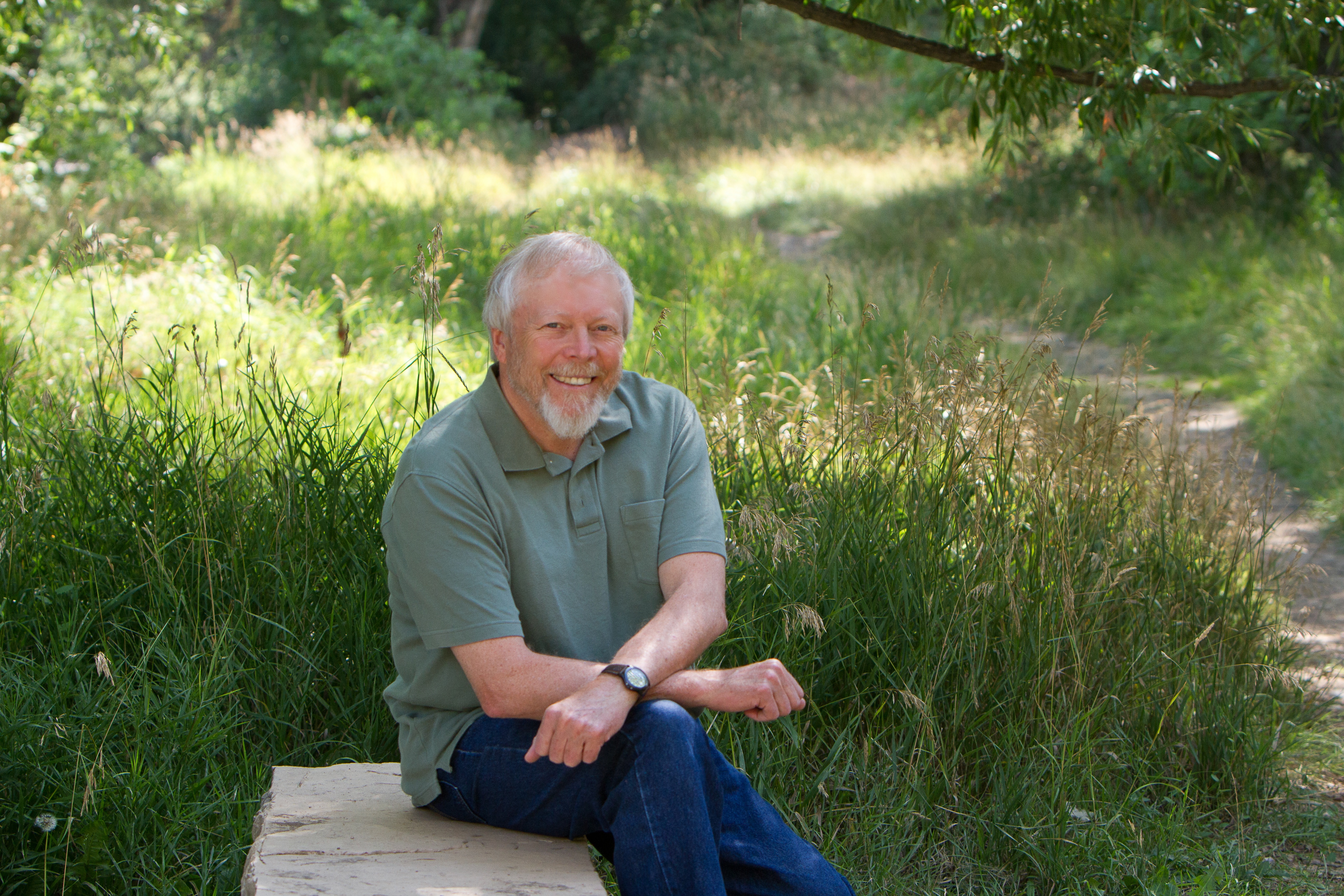
 Real Balance Global Wellness has trained thousands and thousands of wellness coaches around the world. As I delivered many of these trainings, read case studies and listened to hundreds of recordings of coaches in action, I learned so much. I learned what coaches need to learn. I discovered where their challenges were, what skills they tended to underutilize, or overutilize. I saw how they shined and how they struggled. I saw what distinguished the effective coaches from the rest. The more masterful coaches were evident in both their way of being with their clients, and with their knowledge of what to do. As I learned from my students I continued to coach, to teach our certification and our advanced classes, and to mentor, continually accumulating more and more grist for the mill that would become my next book.
Real Balance Global Wellness has trained thousands and thousands of wellness coaches around the world. As I delivered many of these trainings, read case studies and listened to hundreds of recordings of coaches in action, I learned so much. I learned what coaches need to learn. I discovered where their challenges were, what skills they tended to underutilize, or overutilize. I saw how they shined and how they struggled. I saw what distinguished the effective coaches from the rest. The more masterful coaches were evident in both their way of being with their clients, and with their knowledge of what to do. As I learned from my students I continued to coach, to teach our certification and our advanced classes, and to mentor, continually accumulating more and more grist for the mill that would become my next book. Coach training is not a one and done. The best coaches are voracious lifelong learners. In fact, both the ICF (International Coach Federation) and the NBHWC (National Board for Health & Wellness Coaching) include an obligation to continual education and professional development in their codes of ethics. (
Coach training is not a one and done. The best coaches are voracious lifelong learners. In fact, both the ICF (International Coach Federation) and the NBHWC (National Board for Health & Wellness Coaching) include an obligation to continual education and professional development in their codes of ethics. ( Thoughts To Ponder On The Mastery Path
Thoughts To Ponder On The Mastery Path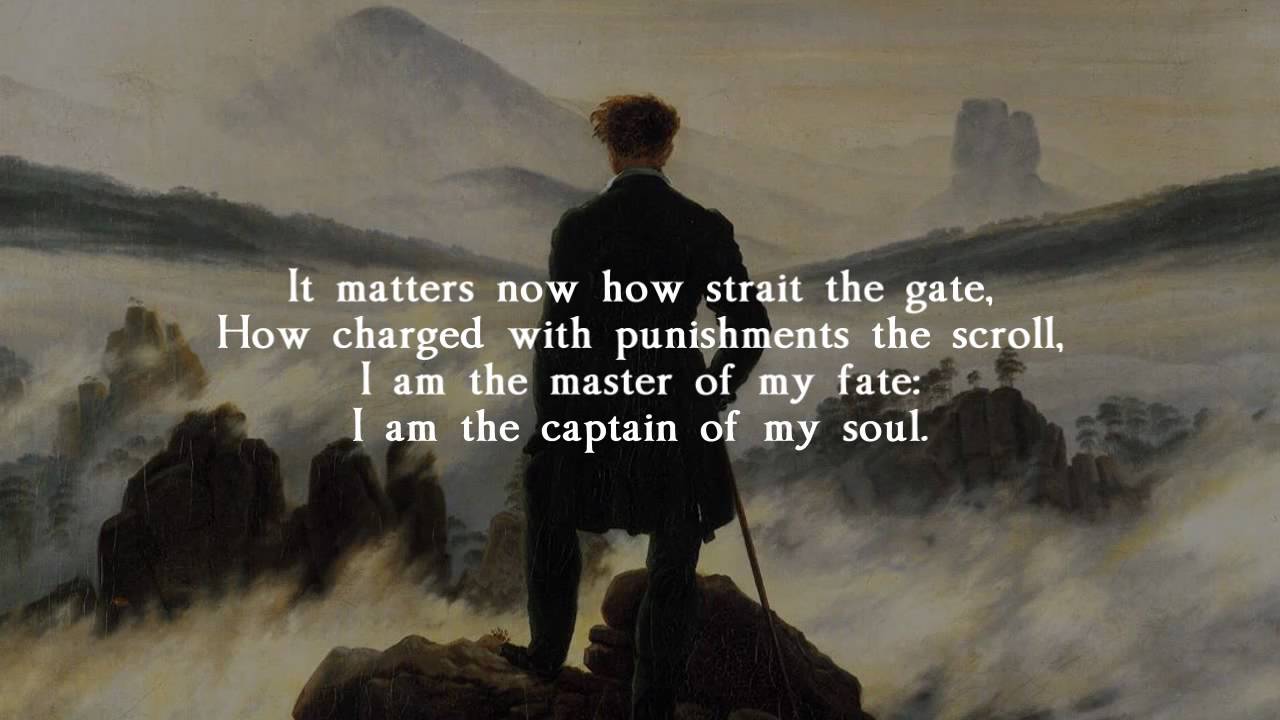
 The life work of psychologists Edward Deci and Richard Ryan (
The life work of psychologists Edward Deci and Richard Ryan ( MOTIVATIONAL SPECTRUM
MOTIVATIONAL SPECTRUM Autonomous behavior is about choice. Deci, in an effective video interview (
Autonomous behavior is about choice. Deci, in an effective video interview (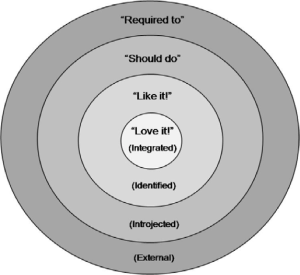
 For the very best in wellness and health coach training look to REAL BALANCE GLOBAL WELLNESS SERVICES, INC. Over 8,000 wellness & health coaches trained worldwide.
For the very best in wellness and health coach training look to REAL BALANCE GLOBAL WELLNESS SERVICES, INC. Over 8,000 wellness & health coaches trained worldwide.  For more about effective coaching refer to Wellness Coaching For Lasting Lifestyle Change, 2nd Ed., by Michael Arloski, Ph.D., PCC, CWP, NBC-HWC.
For more about effective coaching refer to Wellness Coaching For Lasting Lifestyle Change, 2nd Ed., by Michael Arloski, Ph.D., PCC, CWP, NBC-HWC.  and to Your Journey to a Healthier Life (Paths of Wellness Guided Journals) by the same author.
and to Your Journey to a Healthier Life (Paths of Wellness Guided Journals) by the same author.  Great coaching finds a balance between structure and spontaneity, customization, “dancing in the moment” and organization. While some large coaching organizations err on the side of too much structure, using scripts and ridged protocols, some coaches “wing it” way too much. Listening to hundreds of coaching recordings, done with real clients, I’m continually amazed at how loosely many coaches go about their work. Observing the variance in structure, or lack thereof, led me to create some suggestions for how you can discover the benefits of coaching structure for your coaching sessions.
Great coaching finds a balance between structure and spontaneity, customization, “dancing in the moment” and organization. While some large coaching organizations err on the side of too much structure, using scripts and ridged protocols, some coaches “wing it” way too much. Listening to hundreds of coaching recordings, done with real clients, I’m continually amazed at how loosely many coaches go about their work. Observing the variance in structure, or lack thereof, led me to create some suggestions for how you can discover the benefits of coaching structure for your coaching sessions. What works best is a discussion of what all will be talked about in the session and what the client wants to get out of the meeting together. ICF (International Coach Federation) examiners are looking for this kind of review and agreement at the beginning of every coaching session. Just like in a team business meeting, co-creating the agenda means taking in all of the topics to be discussed and then setting an agenda based upon strategy and priorities. It’s best to go with a reasonable blend of urgent and important, remembering that not everything is, in fact, urgent and important.
What works best is a discussion of what all will be talked about in the session and what the client wants to get out of the meeting together. ICF (International Coach Federation) examiners are looking for this kind of review and agreement at the beginning of every coaching session. Just like in a team business meeting, co-creating the agenda means taking in all of the topics to be discussed and then setting an agenda based upon strategy and priorities. It’s best to go with a reasonable blend of urgent and important, remembering that not everything is, in fact, urgent and important. Psychology approach designed to build upon strengths. Make good use of that. Acknowledge those wins. Don’t just say “Okay.” Inquire more about them, request clarification.
Psychology approach designed to build upon strengths. Make good use of that. Acknowledge those wins. Don’t just say “Okay.” Inquire more about them, request clarification.


 For more about effective coaching refer to Wellness Coaching For Lasting Lifestyle Change, 2nd Ed., by Michael Arloski, Ph.D., PCC, CWP, NBC-HWC.
For more about effective coaching refer to Wellness Coaching For Lasting Lifestyle Change, 2nd Ed., by Michael Arloski, Ph.D., PCC, CWP, NBC-HWC. 

 Word Origin – Coach: In the 15th Century the Hungarian village of KOCS was the birthplace of the true carriage or “coach” as the word evolved in English.
Word Origin – Coach: In the 15th Century the Hungarian village of KOCS was the birthplace of the true carriage or “coach” as the word evolved in English.

 Back To Center – Back To The Present
Back To Center – Back To The Present

 Wu Wei is perhaps best thought of as living in a state of effortless harmony and alignment with the natural cycles and ways of nature. We are truly ‘going with the flow’, and able to respond to whatever comes our way. As coaches allow such a way of being our ability to ‘dance in the moment’ is maximized. We aren’t there to intervene, to fix things. We are not attached to a therapeutic agenda, to a treatment-oriented course of action. The client is in the lead and we are able to effortlessly dance with them.
Wu Wei is perhaps best thought of as living in a state of effortless harmony and alignment with the natural cycles and ways of nature. We are truly ‘going with the flow’, and able to respond to whatever comes our way. As coaches allow such a way of being our ability to ‘dance in the moment’ is maximized. We aren’t there to intervene, to fix things. We are not attached to a therapeutic agenda, to a treatment-oriented course of action. The client is in the lead and we are able to effortlessly dance with them. Coaches and clients walk down a pathway together at night in the forest. The coach’s job is hold the flashlight and illuminate what is before them.
Coaches and clients walk down a pathway together at night in the forest. The coach’s job is hold the flashlight and illuminate what is before them.  When you get knocked off-center, accept how this is simply part of the normal human experience. The centered person does not tip-toe through life like they were on a balance beam. The idea is that of reducing our “center-recovery time”. If we are practicing what centers us in our lives we can come back to center more quickly.
When you get knocked off-center, accept how this is simply part of the normal human experience. The centered person does not tip-toe through life like they were on a balance beam. The idea is that of reducing our “center-recovery time”. If we are practicing what centers us in our lives we can come back to center more quickly.